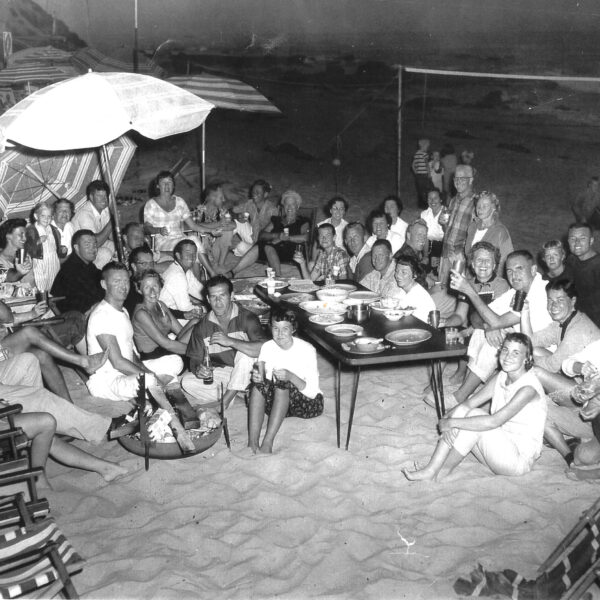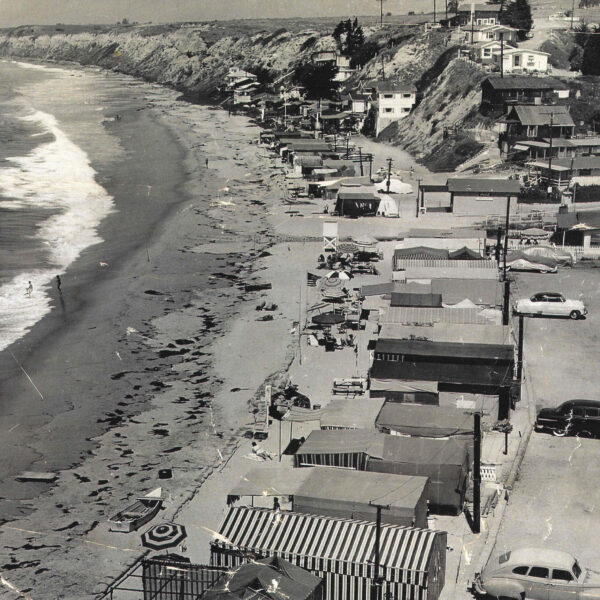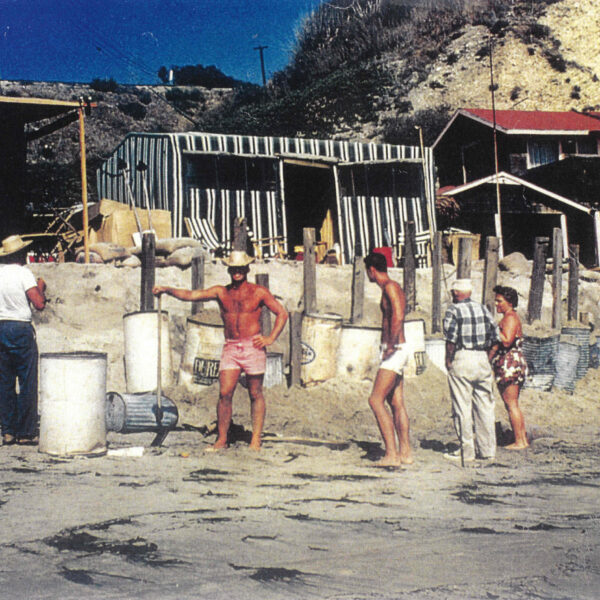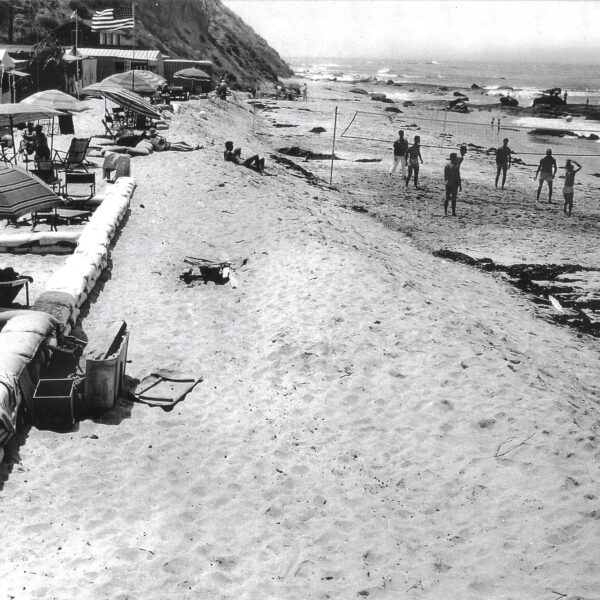Tent Camping at Crystal Cove
It wasn’t an exaggeration when longtime Coveite Mike Fenderson described the heyday of Crystal Cove’s tent camping era as “going to live all summer at the beach.” Families pulled up to the sand over Memorial Day weekend with trucks and trailers full of supplies for ingenious tents that they lived in through Labor Day weekend. These seasonal “tents” were outfitted with enough comforts to be called “cabanas” by their occupants, and were beloved ocean-front summer homes for a community of families.
While post-World War II tent campers at the Cove made an art of seasonal on-the-sand homekeeping, they weren’t the first campers to seek refuge there. Among the first twentieth-century campers were landscape artists on horseback, Irvine Ranch employees with their families and friends, and Hollywood film crews who used the Cove’s exotic paradise-like setting for silent movies. These early campers extended their stays with primitive do-it-yourself accommodations that included re-purposed film sets left behind by the studios.
Tent camping gained momentum and rules over the years. By 1925 there were enough campers on the Irvine Ranch’s private beach property for James Irvine II to establish an official concession. The 1926 opening of Pacific Coast Highway brought even more tenters to light up the Cove with bonfires and kerosene lanterns.
Tent camping was suspended during World War ll but returned after the war, and reflected an optimistic post-war mood that included luau parties, fishing for dinner, ukulele sing-alongs, and 12-foot by 24-foot tents assembled like barn raisings, with temporary subfloors and wood framing beneath canvas. Unlike primitive conditions of earlier times, the modern Crystal Cove campsite had community amenities such as showers and restrooms, and provided electricity to each site. Some tenters rigged running water, and most had butane stoves, coffee pots, and a refrigerator. Interior privacy walls of fabric were hung with wire and shower curtain rings. Sandbags stacked into low walls protected tents from high tide and also created individual ocean-front “yards” with sandbag-bench seating.
Whatever the ocean or neighbors didn’t provide (including mail service) was offered by the on-the-sand seasonal general store and soda fountain — and a little bungalow that opened on the bluff top in the late 1940s to sell dried fruit, juices, and milkshakes.
In 1962, on-the-sand beach tenting ended in Orange County, and the Crystal Cove camping concession closed, but the bluff-top “shake shack” remains, as does bluff-top and backcountry camping. Today, Orange County has close to the same population as the entire state of California had when the new Pacific Coast Highway was completed above the Cove in October, 1926. Almost a century later, still being able to pitch a tent under the stars at Crystal Cove today makes us almost as lucky today as tent campers were back then.




